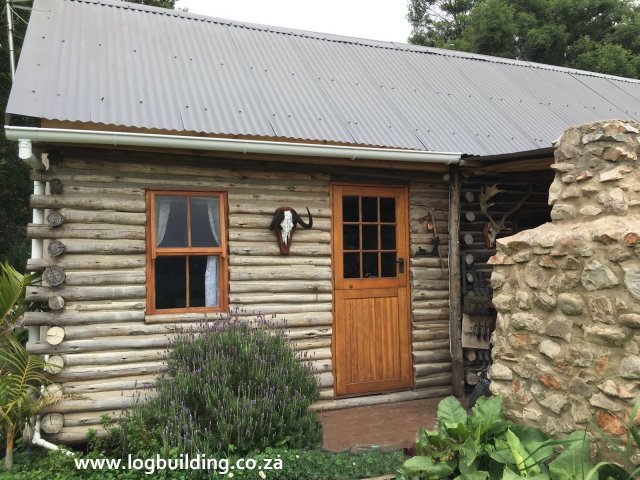
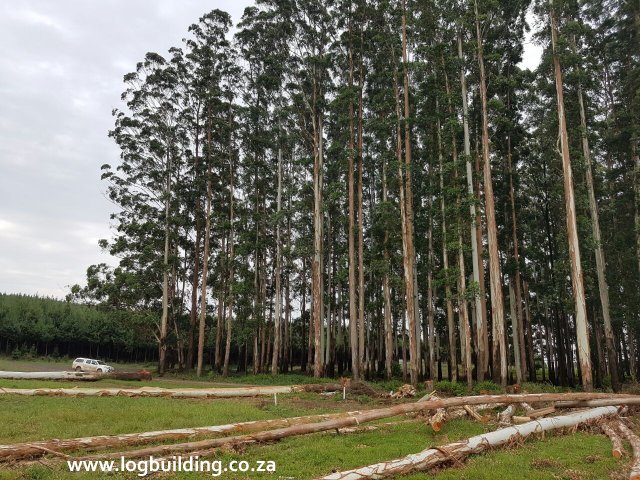
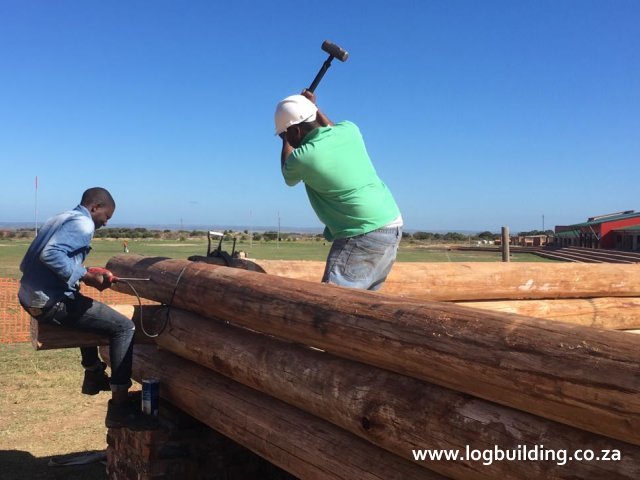
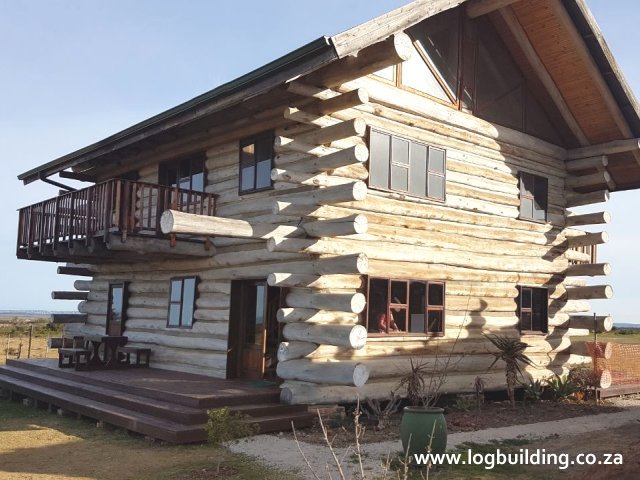
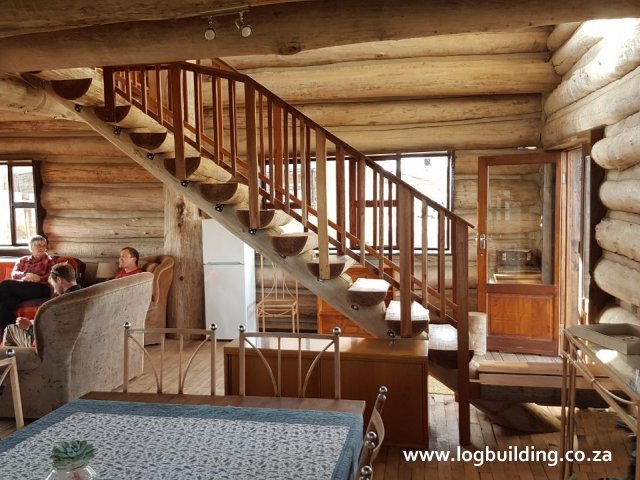
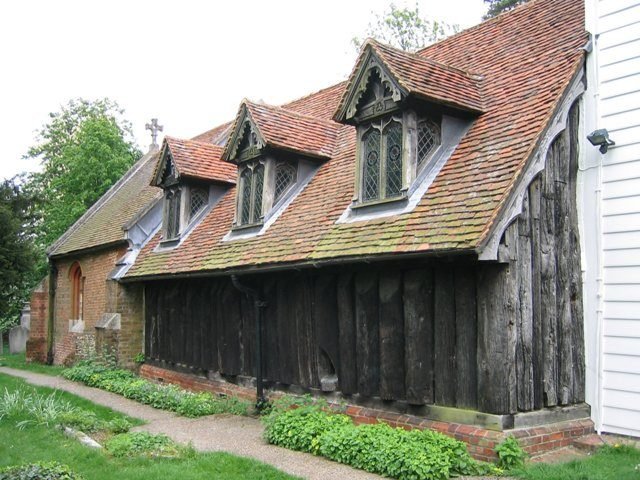


Why use logs?
To be specific: If you build a house out of logs, then you use just that - logs - as nature grew them - 'in the round' so to speak. We do not machine, saw, plank, turn or cut the logs.
We do not cut the logs flat in any way.
Logs are probably one of the only truly renewable resources available for building.
Logs are the ultimate 'composite' material, exceeding concrete and steel in terms of strength to weight ratio.
Logs do not require any energy to convert into usable material.
This is called 'embodied energy'. Building materials such as bricks, Cement, steel, glass, etc have to be processed, and therefore have high embodied energy, which adds to the financial and environmental cost.
Cheap! Trees are at their lowest value when standing in the forest.
Solid, un-machined logs have a natural flowing grain structure which gives them great strength and resistance to moisture penetration and beetles.
Solid log homes have a very long lifespan, with minimal maintenance if built correctly.
Humans have a long history of building with timber, log homes have been around for thousands of years.

A good example is St. Andrews Church, Greensted, Essex, England, built out of oak logs in 1060AD and
still holding regular services in the original log structure, claimed to be the oldest wooden church in the world. Yes, there have been some renovations done over the last 1000 years, however the original structure remains in daily use.
How would you look at this age?
This is a good testament to the durability of log structures, still in daily use over 1000 years later!
Consider that this church was built long before toxic timber treatments, paints and sealers.
How did it last so long?
The fact is that they used very simple principles.
These are principles which I like to teach everyone and have used to preserve my own log home, if my log home lasts 1000 years, I will be very happy, knowing that many generations have the use of this shelter.
Thick log walls make excellent insulation.
Your log home stays a comfortable temperature all year round, which saves energy, heating, cooling, money, environmental pollution, etc.
A few simple concepts including architecture are used to preserve buildings, which do not involve toxic chemicals.
No part of the log is wasted when building a log home 100% of the tree can be used. Even the off-cuts can be used for firewood and Borate treated sawdust for garden mulch.
Butt and Pass log homes require almost no maintenance, besides the painting of window frames and doors (which you have with any building regardless).
No special skills are required to build a Butt and Pass log home.
An important distinction must be made between log homes and timber frame buildings.
The average log home uses less timber than an equivalent sized timber frame house, due to
there being no losses due to milling and processing.
Milling logs into planks and kiln drying and treating them to build a timber framed house is not
only wasteful, but requires a huge amount of energy and toxic chemicals, after that, you end up with a structure which requires you to add insulation due to the fact that the walls are so thin.
Timber framed homes tend to have a short life span of only 25-35years (incidentally, just long enough to pay off the mortgage) generally it is not the timber that gives up, but the fasteners and fixatives which hold them together, which means that the planet earth's resources have to be consumed again to replace the structure.
It is far better to build a log home that is designed to last hundreds of years, many generations can use that home without costing the earth.
All of this will be covered in detail on the course.
Environmental sustainability
Whether log homes are truly environmentally friendly is a debatable issue, it all depends on your perspective and what alternatives are available.
Sustainable? Definitely yes!
The trees can re-grow many times over during the lifespan of the house.
When compared to other building materials, such as bricks and mortar it most definitely is environmentally friendly.
Estimates available on various web sites vary between 5% and 8% of total global Carbon Dioxide emissions are produced by the cement industry. The UN claims that up to 40% of green house gasses are produced by the general construction industry alone. This is the industrial sector that can have the greatest effect on reducing green house gasses.
A sobering UN draft document relating to the built environment states that "It is clear that continuing with business as usual will jeopardize the future of all human societies…" Replanting trees will help leave a better planet for future generations. I must admit, sometimes I lose control, I get all carried away and plant hundreds and hundreds of trees every year (just for the fun of it). In comparison to bricks and mortar this certainly is more environmentally friendly.
No doubt about it.
Where does the tree come from?
So where does all the food come from that the tree uses to grow? The answer is - it comes from the air. Trees carry on the process of photosynthesis. Photosynthesis is the process by which plants utilize the energy from the sun to make sugar from carbon dioxide in the air. The next time you look at a tree think about the fact that what you see was once nothing but carbon dioxide gas.
At risk of getting too technical, the equation for photosynthesis is:
CO2(carbon dioxide) + H20 (water)---> C6H12O6 (sugar) + O2(oxygen)
The practice of calling something 'green' or environmentally friendly, when in fact it isn't.
Slapping a solar panel on a concrete and steel building does not make it green, the only way to make a concrete and steel building 'green' is by painting it green.
The tree absorbs Carbon Dioxide from the atmosphere throughout it's growing life, it is filtering the air that we breathe, a small amount of natures favorite solvent 'water' carries a small amount of minerals into the system, which becomes sap, which acts to transport all the goodies around.
Through an amazing natural process which we call photosynthesis, the leaves, natures 'solar panels', the Carbon and Oxygen are split, the tree gives off the Oxygen (handy for us) and retains the Carbon (also handy for us), which is used as the 'building blocks' of the timber. The Carbon is stored in the logs your house is built out of while it stands.
Therefore, by planting many trees you remove many tons of Carbon Dioxide from the atmosphere.
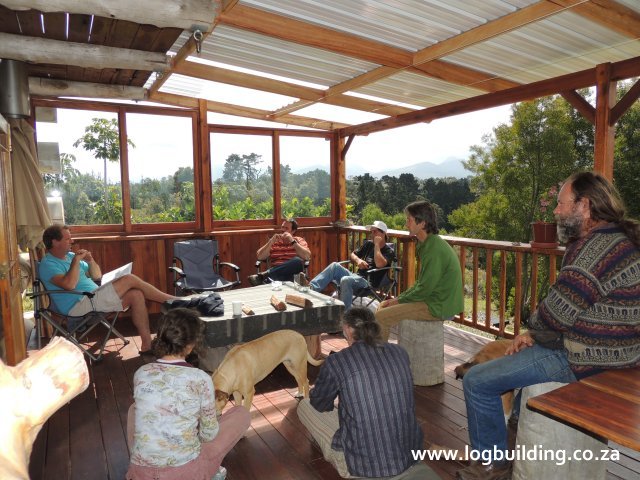
Replanting the trees with new saplings after felling is a great way of sustaining this valuable resource for our future generations. Or even go really crazy and replant ten times as many.
One more thing, I advocate using alien (to South Africa) species of timber, such as Pine and Eucalyptus which is often invasive, reducing our own indigenous bio-diversity in South Africa.
There's more!
The log walls provide excellent insulation, which means we need less fuel to keep our house warm or cool, which also saves you money, which saves you time, which saves you work.
"When you burn timber to heat your house, the heat which you feel from the fire is the sunlight heat which has been stored while the tree was growing."
Then of course there is always 'Greenwashing'
Do you think that your are too old to build your own home?
80 year old student builds awesome log home
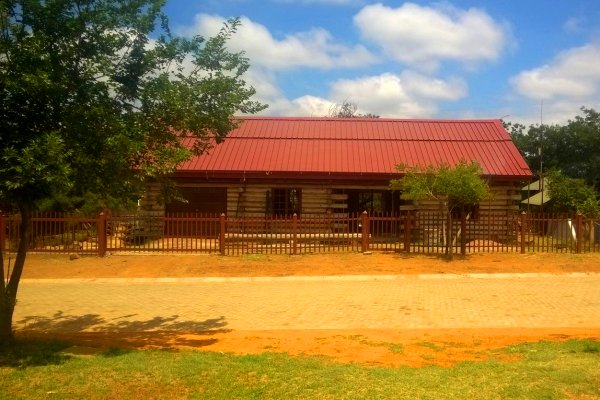
Hennie commented on "4th & 5th June Log home building course"
30 Jun 2016
"Hi Roy and Cathy,
Have been quite an experience to be on the course, thank you very much.
Have already acquired an erf to build on, built a model and drawn up all the sketches.
It is now sitting with the draftsman and then for approval.
Quite a few people tried to pee on my fire, saying that at 76 I am too old to try something like this.
Thanks again,
Hennie A."
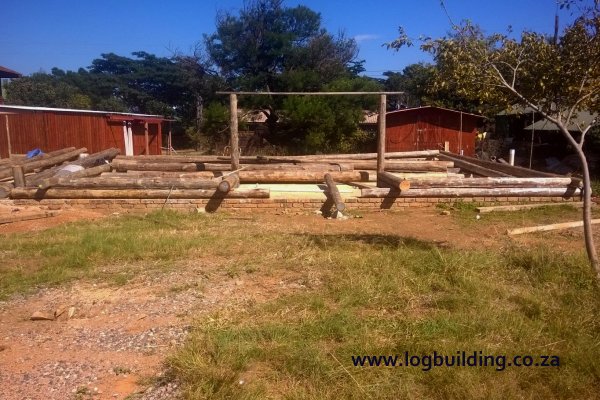
If you think that you are too old to build your own home, think again!
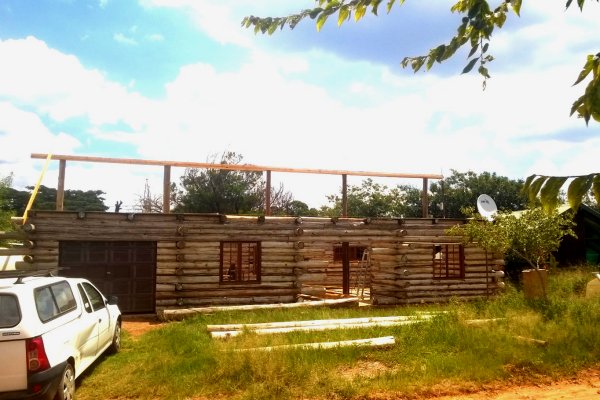
It is not rocket science, all you need is energy and the correct education.
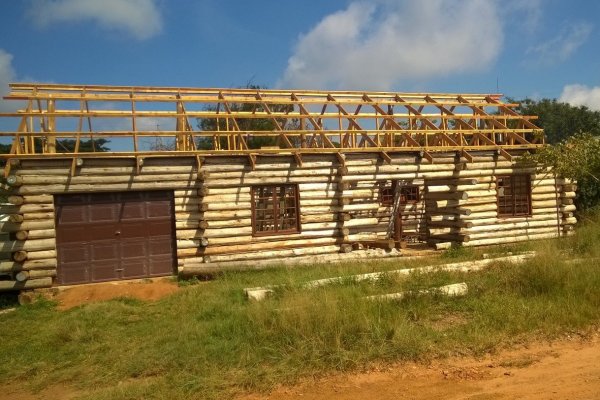
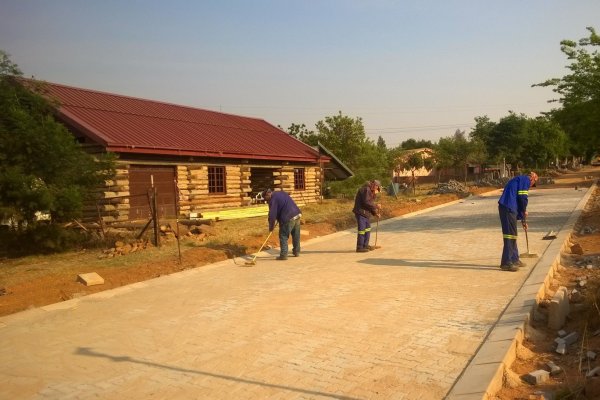
I had very little help. Regards
Hennie A"